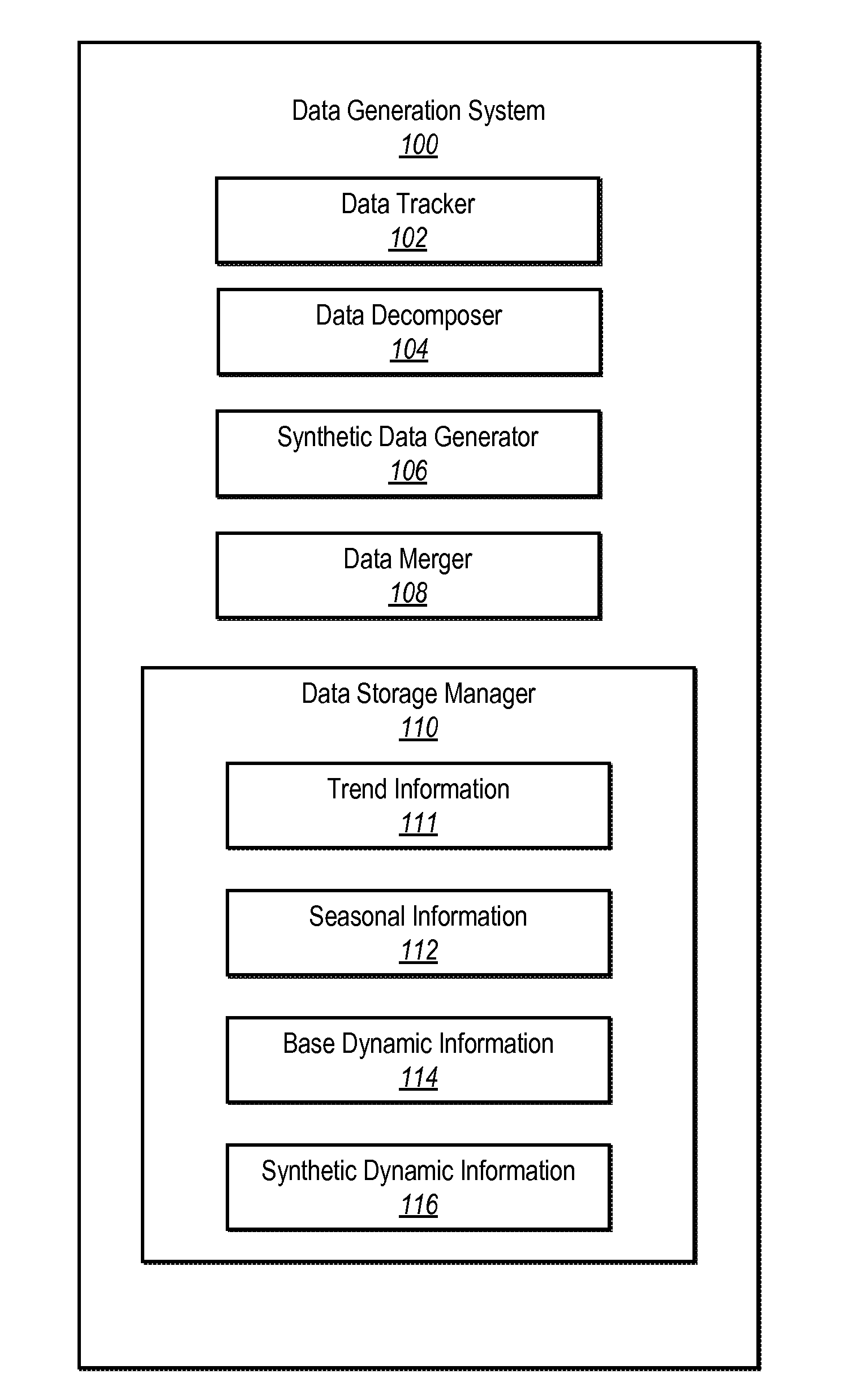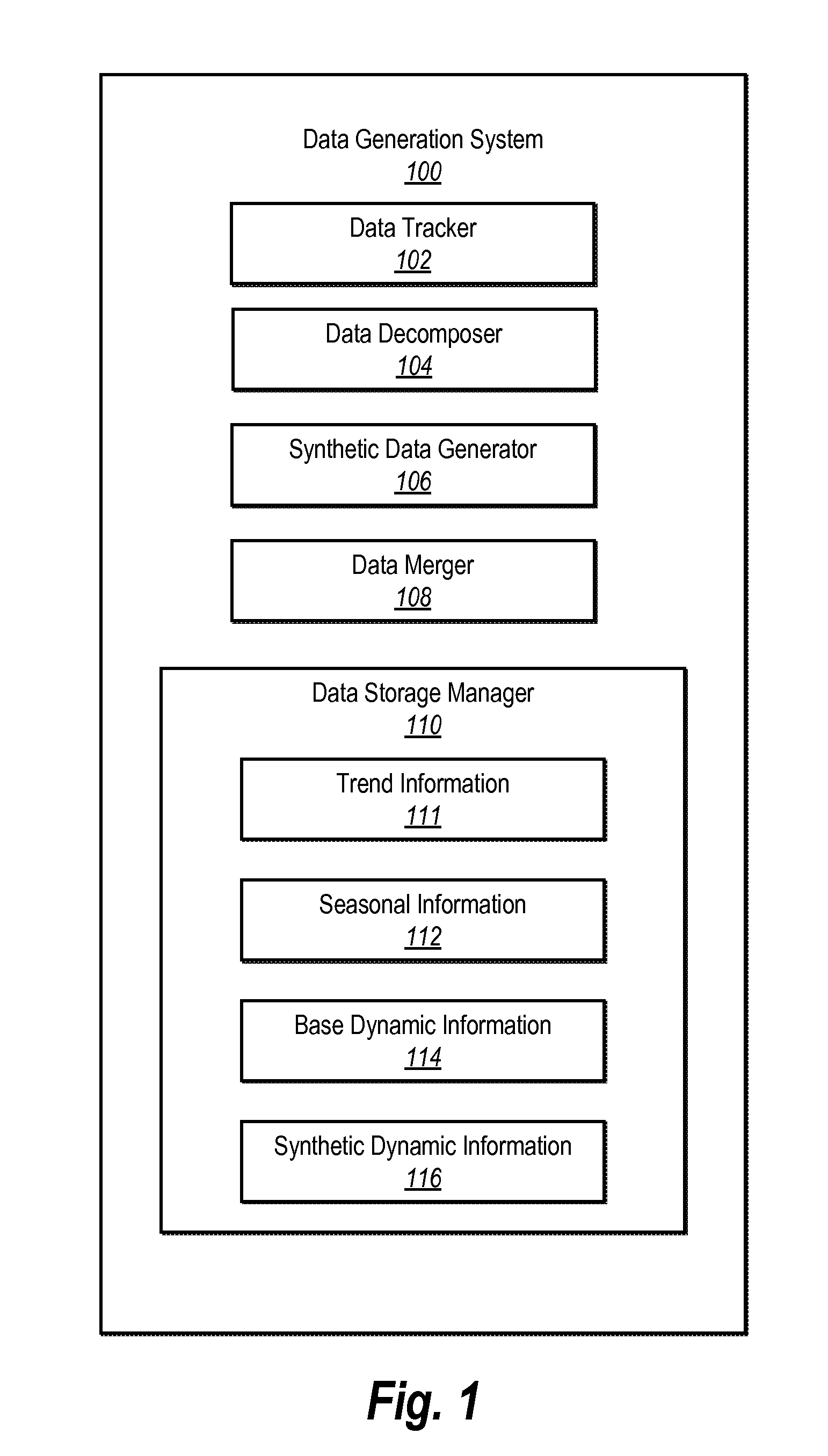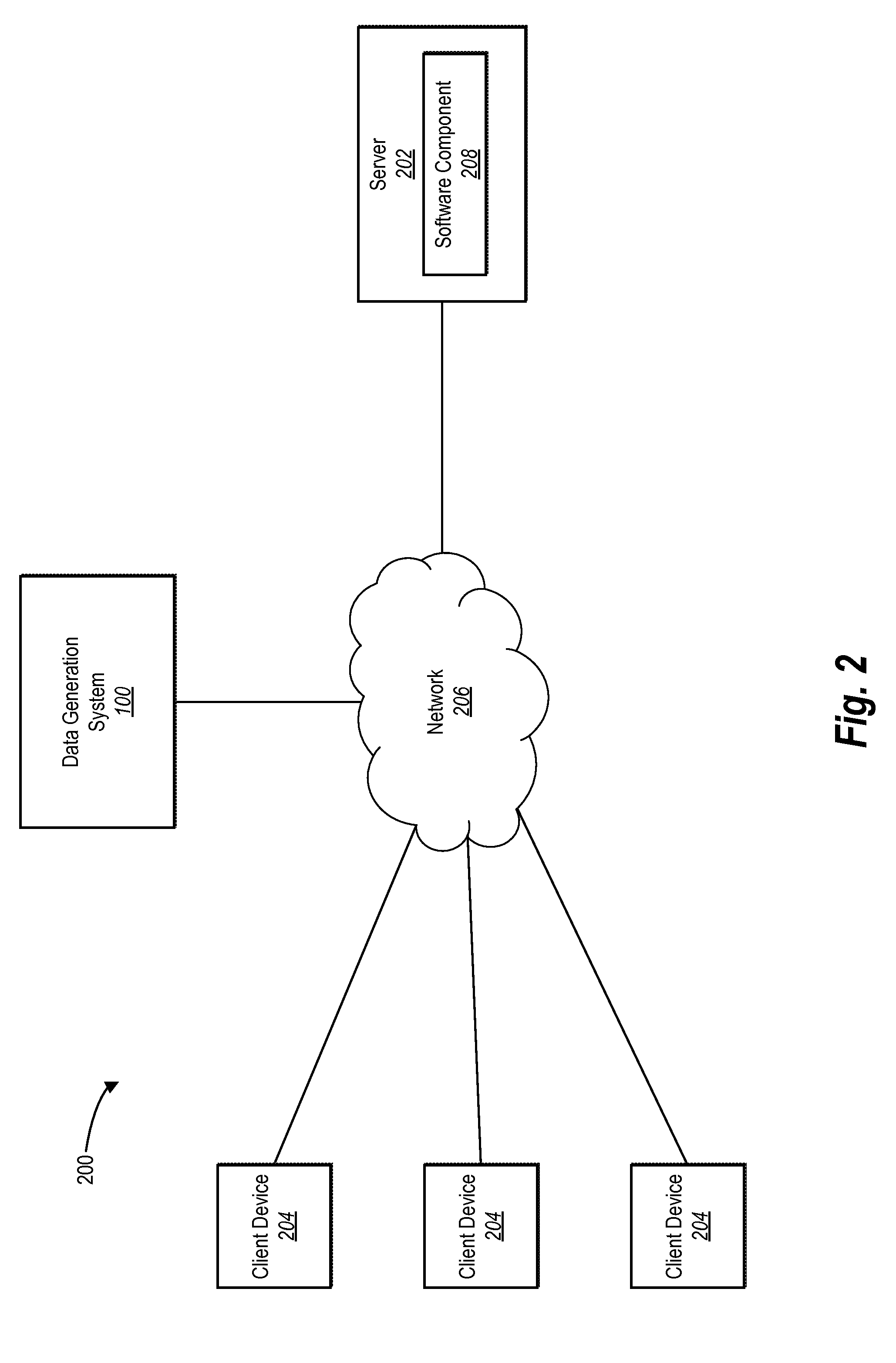Generating synthetic data
a synthetic data and data technology, applied in the field of synthetic data generation systems and methods, can solve the problems of inaccurate or otherwise unsatisfactory predictions, inability to produce accurate predictive analysis, and inability to access available analytics data,
- Summary
- Abstract
- Description
- Claims
- Application Information
AI Technical Summary
Benefits of technology
Problems solved by technology
Method used
Image
Examples
Embodiment Construction
[0026]One or more embodiments include a data generation system. The data generation system produces synthetic data from a base dataset having certain time dependent characteristics. In particular, the data generation system can generate synthetic data from the base dataset by first decomposing the base dataset into a dynamic component, a trend component, and / or a seasonal component. The data generation system can generate a new dynamic component based on the dynamic component of the base dataset. The data generation system can then merge the new dynamic component with the trend component and / or the seasonal component to generate a synthetic dataset.
[0027]In one or more embodiments, the data generation system applies a decompose-merge algorithm to the base dataset to obtain the synthetic dataset. Specifically, the decompose-merge algorithm first decomposes the base dataset into a plurality of components. For example, the decompose-merge algorithm decomposes the base dataset into at l...
PUM
 Login to View More
Login to View More Abstract
Description
Claims
Application Information
 Login to View More
Login to View More - R&D
- Intellectual Property
- Life Sciences
- Materials
- Tech Scout
- Unparalleled Data Quality
- Higher Quality Content
- 60% Fewer Hallucinations
Browse by: Latest US Patents, China's latest patents, Technical Efficacy Thesaurus, Application Domain, Technology Topic, Popular Technical Reports.
© 2025 PatSnap. All rights reserved.Legal|Privacy policy|Modern Slavery Act Transparency Statement|Sitemap|About US| Contact US: help@patsnap.com



